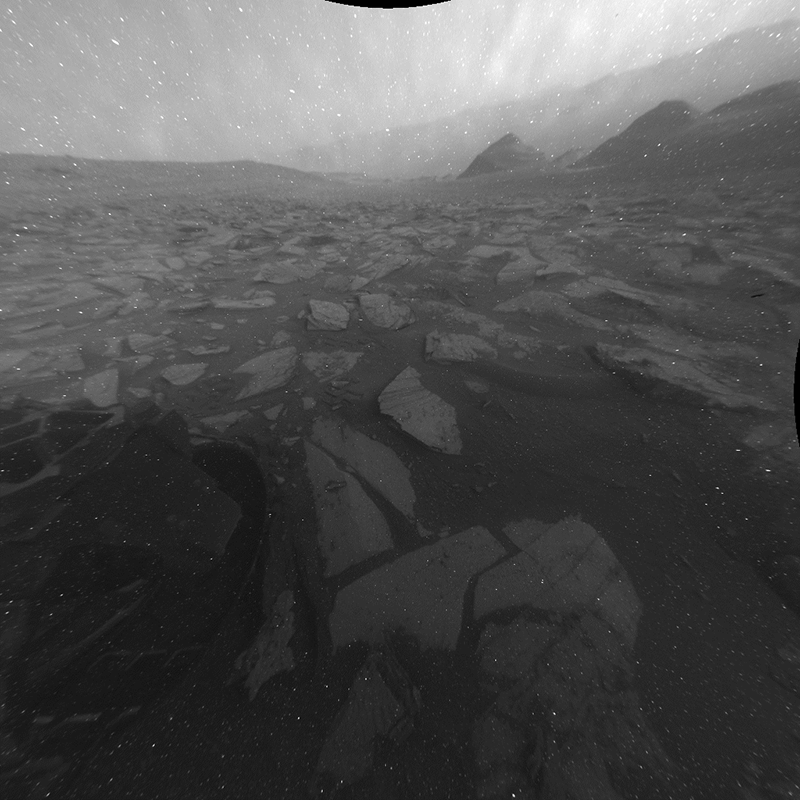Curiosity Captures a Day on Mars
![]()
NASA’s Curiosity Mars rover is putting a cap on 2023 with a pair of new GIFs that show the Martian landscape over 12 hours from sunrise to sunset.
The new animated images comprise 25 frames each, showing the passage of 12 hours on the Martian surface. The images were captured on November 8, 2023, the 4,002nd Martian sol of the Curiosity mission.
“The commands to capture the images that make up these videos were among the last that engineers beamed up to the rover before the start of Mars solar conjunction — a period of several weeks when the Sun is between Earth and Mars. Because the Sun’s plasma can interfere with radio communications, NASA’s Mars missions stand down from sending commands to their spacecraft during conjunction, bringing the missions to a temporary standstill,” NASA explains.
![]()
The images were captured using the rover’s front and rear Hazard-Avoidance Cameras, or Hazcams. These black-and-white cameras are used by rover operators to plan safe routes for the rover. The series of images have then been put together into a video, which allows scientists to “look for passing clouds or dust devils, which teach them more about the Martian environment.”
The recent images marked the first time during Curiosity’s lengthy mission that the rover has captured images for a 12-hour period from sunrise to sunset. The exposures ranged from about a third of a second during the middle of the day to more than a minute as dusk settled over Mars. The long exposures have noise, known as “hot pixels,” that appear like snow over the scene. Some of the speckles in the frames are instead due to dust, as the rover has been on Mars for 11 years and there is not a reliable way to clean the Hazcam’s lenses.
The GIF above shows the view from the rover’s front Hazcam looking southeast along Gediz Vallis, a valley on Mount Sharp, Curiosity’s home since it landed on Mars in 2014.

“The sky brightens during sunrise in the east (left of image), and the shadow of the rover’s stationary 7-foot (2-meter) robotic arm moves across the ground like that of a sundial. The rover’s two front wheels are visible on each side of the frame; at upper left is a circular calibration target mounted on the shoulder of the robotic arm,” NASA explains.
The calibration target is used to test the accuracy of the rover’s Alpha Particle X-ray Spectrometer, which is used to detect chemical elements on the planet’s surface.
Image credits: NASA/JPL-Caltech